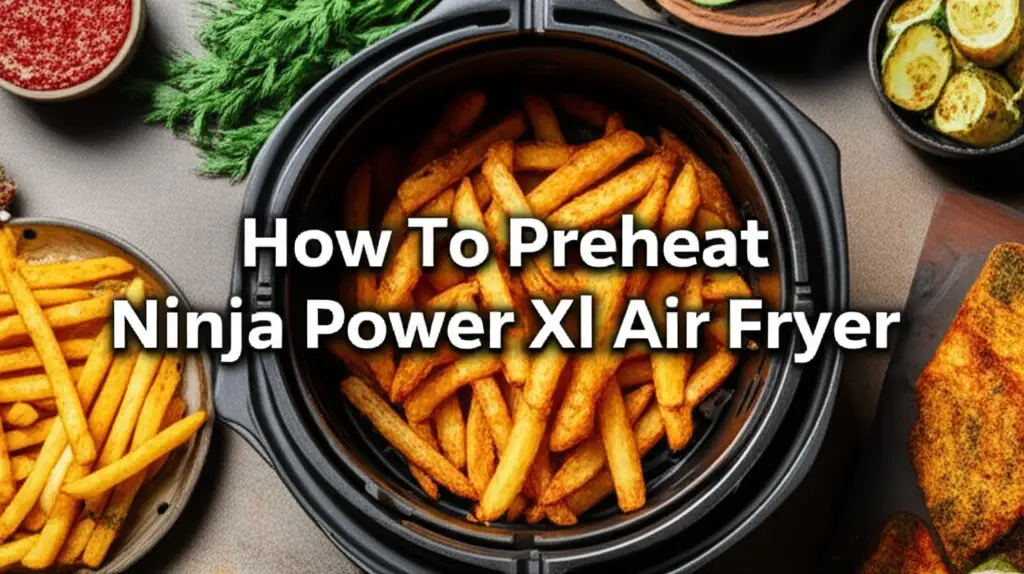· Todd Martin · Food Safety, Kitchen Tips, Cooking Guides · 10 min read
How To Clean Ground Beef

Master How To Clean Ground Beef for Safe Cooking
Many people wonder about the best ways to prepare meat safely. You might ask, “How do I clean ground beef before cooking?” The idea of cleaning ground beef might seem simple, but it actually involves understanding proper food safety from start to finish. We do not typically wash raw ground beef, as this can spread bacteria. Instead, “cleaning” refers to a process of safe handling, proper cooking, and thorough kitchen hygiene. This article will guide you through crucial steps. We will cover everything from smart shopping to storing, thawing, and cooking ground beef to safe temperatures. You will also learn effective ways to clean your kitchen surfaces and tools after handling raw meat. My goal is to help you enjoy delicious ground beef dishes without food safety worries.
Takeaway:
- Avoid washing raw ground beef to prevent bacterial spread.
- Practice proper hygiene: wash hands, sanitize surfaces and tools.
- Cook ground beef to an internal temperature of 160°F (71°C).
- Store raw and cooked ground beef separately and at correct temperatures.
- Thaw ground beef safely in the refrigerator, cold water, or microwave.
You do not wash raw ground beef. Instead, “cleaning” means safe handling, thorough cooking to 160°F (71°C), and proper kitchen cleanup to prevent bacterial contamination. Focus on handwashing, sanitizing surfaces, and separating raw from cooked foods to ensure food safety.
Understanding “Cleaning” Ground Beef: What It Really Means
When we talk about “how to clean ground beef,” it is important to clarify what that phrase truly means. Many assume it refers to rinsing the meat under water, but this practice is not recommended. Washing raw ground beef can actually do more harm than good. It causes bacteria like Salmonella and E. coli to splash onto your sink, countertops, and other surfaces. This process is called cross-contamination.
My aim is to help you understand that “cleaning” in this context is about preventing contamination. We want to keep your food safe for consumption. This involves a comprehensive approach to food hygiene throughout the cooking process. You focus on cleanliness around the meat, not on the meat itself. Bacteria thrive in moist environments, and rinsing meat simply spreads these germs. Instead, proper cooking eliminates harmful bacteria.
Safe Handling of Ground Beef From Store to Fridge
Safe handling begins right at the grocery store. I always make sure ground beef is the last item I place in my shopping cart. This minimizes the time it spends outside of refrigeration. It is also a good idea to put raw meat in a separate plastic bag. This prevents any juices from leaking onto other groceries.
Once you get home, place the ground beef in the coldest part of your refrigerator immediately. The ideal temperature for your fridge should be 40°F (4°C) or below. You can keep ground beef in its original packaging. However, if the packaging is damaged, transfer it to an airtight container or a sealed plastic bag. Proper storage limits bacterial growth significantly. For general kitchen organization, ensuring your fridge is clean helps. You can learn tips on keeping kitchen areas tidy, even about how to clean under a refrigerator, to maintain overall cleanliness. Raw ground beef stays fresh for only one to two days in the refrigerator.
Thawing Ground Beef Safely: Avoiding Danger Zones
Proper thawing of ground beef is a critical step in food safety. Thawing at room temperature is dangerous. This method allows bacteria to multiply rapidly on the meat’s surface while the inside remains frozen. There are three safe methods for thawing ground beef.
The safest method is thawing in the refrigerator. This takes the longest, usually 24 hours for a pound of ground beef. Plan ahead if you choose this option. Place the meat on a plate or in a container to catch any drips. Another quick option involves cold water. Put the ground beef in a watertight plastic bag and submerge it in cold tap water. Change the water every 30 minutes to keep it cold. This method typically thaws one pound in about an hour. The third method uses a microwave. If you thaw ground beef in the microwave, you must cook it immediately after thawing. This is because some areas of the meat may begin to cook during the microwave process. Never refreeze raw ground beef that has been thawed in cold water or the microwave.
Cooking Ground Beef for Optimal Safety and Flavor
Cooking ground beef to the correct internal temperature is the most important step for safety. Harmful bacteria, if present, are destroyed when meat reaches a safe temperature. For ground beef, this temperature is 160°F (71°C). You should always use a food thermometer to check this. Insert the thermometer into the thickest part of the meat mixture.
Browning ground beef is a common first step in many recipes. While browning changes the color, it does not guarantee safety. The only way to know if it is safe is to check the internal temperature. As you cook, fat often renders out of the beef. I recommend draining this excess fat for a healthier dish and better texture. This prevents your final dish from being overly greasy. After you cook, remember to clean your cookware properly. Learning how to clean the bottom of a pan is useful, especially after cooking ground beef, where residue can accumulate. Additionally, understanding how to clean stainless steel surfaces, common in many kitchens, ensures your cooking area remains pristine and hygienic.
Post-Cooking Cleanup: Cleaning Up After Ground Beef
After you finish preparing and cooking ground beef, immediate and thorough cleanup is essential. This is a significant part of how to “clean” ground beef indirectly, by addressing the potential for contamination after handling raw meat. My first action is always to wash all surfaces that touched the raw meat. This includes countertops, cutting boards, and utensils. Use hot, soapy water for this task. Then, sanitize these surfaces with a diluted bleach solution or a commercial kitchen sanitizer. This step kills any lingering bacteria.
Dealing with grease is often part of ground beef cleanup. I find that wiping away excess grease with paper towels before washing makes the job easier. For stubborn grease splatters, specific methods can help. Knowing how to clean grease stains is a valuable skill in the kitchen. For dishes and utensils, load them into your dishwasher. If you want to boost your dishwasher’s performance and cleanliness, regularly learning how to clean a dishwasher with vinegar can be very effective. This ensures all your cooking tools are ready for your next meal without any lingering germs.
Preventing Cross-Contamination: A Key to Clean Kitchens
Preventing cross-contamination is a fundamental principle of kitchen hygiene, especially when dealing with raw ground beef. This means keeping raw meat separate from ready-to-eat foods. For example, I always use a different cutting board for raw meat than for vegetables or bread. It is best to have color-coded boards if possible. If you only have one, wash and sanitize it thoroughly after using it for raw meat.
Utensils that touch raw meat should not touch cooked food or other ingredients. Use separate tongs or spatulas. My most important rule is frequent handwashing. Wash your hands with soap and water for at least 20 seconds before, during, and after handling raw ground beef. Avoid wiping your hands on an apron or towel and then touching other items. This can spread bacteria. Maintaining overall kitchen cleanliness, like learning how to clean a kitchen sink or even general cleaning using vinegar, such as how to clean a shower with vinegar, reinforces good hygiene habits that extend to all areas of your home.
Storing Cooked Ground Beef and Leftovers
Storing cooked ground beef correctly ensures its safety for later consumption. After cooking, you should cool the ground beef quickly. Do not leave it at room temperature for more than two hours. If the room is very warm (above 90°F or 32°C), reduce this time to one hour. Divide large portions into smaller, shallow containers to speed up the cooling process. This helps the meat reach a safe temperature faster.
Place the cooled ground beef in airtight containers. This prevents moisture loss and protects it from other odors in the refrigerator. Cooked ground beef is safe to eat for three to four days when stored in the refrigerator. For longer storage, freeze it. Frozen cooked ground beef will maintain its quality for about two to three months. When reheating leftovers, always ensure they reach an internal temperature of 165°F (74°C). This ensures that any bacteria that might have grown during storage are eliminated. Consider preparing the beef on surfaces that are easy to clean, such as a baking steel, and know how to clean a baking steel properly for best results.
FAQs About How To Clean Ground Beef
Should you wash ground beef before cooking?
No, you should not wash raw ground beef before cooking. Washing can spread bacteria like Salmonella and E. coli from the meat to your sink, countertops, and other kitchen surfaces through splashing. This cross-contamination increases the risk of foodborne illness. Proper cooking temperatures will kill harmful bacteria.
How do you know if ground beef has gone bad?
You can identify spoiled ground beef by several signs. It will typically have an off-smell, often sour or strong. The color may change from a bright red to dull brown or greenish. The texture might become slimy or sticky to the touch. If you notice any of these signs, discard the meat immediately.
What is the safe internal temperature for ground beef?
The safe internal temperature for cooked ground beef is 160°F (71°C). Always use a food thermometer to verify this temperature. Insert the thermometer into the thickest part of the beef. The meat should be uniformly cooked through, with no pink remaining in the center for safety.
How long can raw ground beef stay in the fridge?
Raw ground beef can safely stay in the refrigerator for one to two days. Store it in the coldest part of your fridge, ideally at 40°F (4°C) or below. If you do not plan to cook it within this timeframe, it is best to freeze the ground beef.
Can you refreeze thawed ground beef?
You can refreeze ground beef that was thawed in the refrigerator. If thawed by cold water or microwave, it should be cooked immediately and then can be refrozen after cooking. Refreezing raw ground beef thawed outside the refrigerator is not recommended due to increased bacterial growth.
What are the best practices for preventing cross-contamination?
Preventing cross-contamination involves several key practices. Use separate cutting boards and utensils for raw meat and other foods. Wash your hands thoroughly with soap and water before and after handling raw meat. Clean and sanitize all surfaces that come into contact with raw meat immediately after use.
Conclusion
Understanding how to clean ground beef is not about washing the meat itself, but rather about mastering a set of crucial food safety practices. We learned that rinsing raw ground beef spreads bacteria, posing a risk of cross-contamination. Instead, the focus shifts to careful handling, proper storage, safe thawing methods, and thorough cooking to 160°F (71°C). My hope is you now understand the importance of immediate kitchen cleanup after handling raw meat. Remember to wash your hands, sanitize surfaces, and use separate tools. By following these guidelines, you ensure your ground beef dishes are not only delicious but also completely safe for you and your family. Apply these principles every time you cook, and you will contribute to a healthier kitchen environment.
- ground beef safety
- food hygiene
- meat preparation
- kitchen cleanliness
- cooking tips
- preventing foodborne illness
- safe handling raw meat



